"Thanks for Explaining Me" is the name of the exhibition of sketches, collages, photographs and films by Jack Smith curated by Neville Wakefield for the Barbara Gladstone Gallery, on view from May 6 - June 16, 2011.
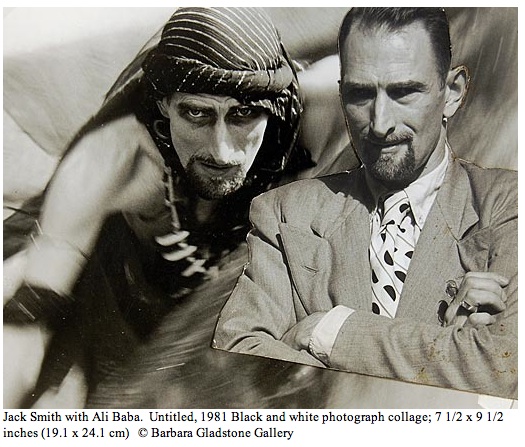
If there's an artist who most reminds us there are multiple art worlds--each with its own pantheon of artists, fans, aesthetic and ideological concerns and targeted markets--it's got to be Jack Smith. A guru of the East Village beat generation known best for his acutely slack and low-budget films, Smith was so poor he was forced to acquire expired film stock to film his productions and is reputed to have not wasted a frame. Smith's films, photographs, sketches and collages of the late 1950s and early 1960s, along with his performance art of later years, profusely assimilated kitsch, camp and nudity at a time when high art was overwrought with existentialist angst and formalist abstraction.
His work wasn't only dismissed as trash by critics of the day, it was condemned by government authorities as obscene. In 1963, Smith's most famous film, Flaming Creatures, was not only held up by the US Congress as a model of deviance to be banned (and which is technically still banned today), its premiere in the same year was raided by the vice police, with Smith, his projectionist and his audience led out of the theater in handcuffs. It all seems preposterous to us today, especially after we find we must strain to see the fleetingly few, if barely visible, flashes of flaccid penises and women's breasts wagging in the extremities of overexposed frames like the comically burlesque asides they are.
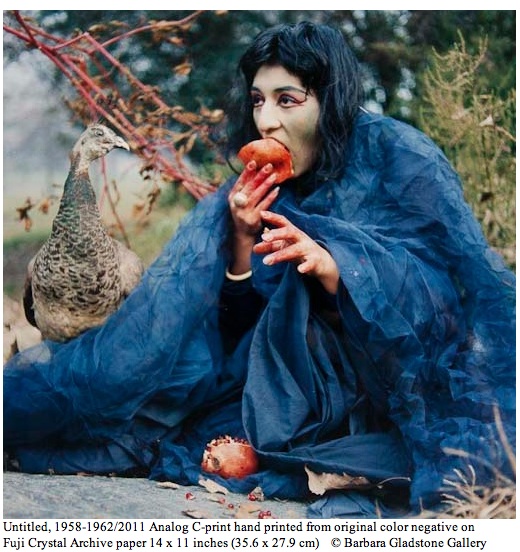
The government intervention only endeared Smith to a cult following that continues to grow fifty years later. Today, Smiths "trash" and "obscenity" brand him as one of the pioneering savants in the development of experimental cinema and performance art. The myth of Jack Smith that has emerged tells us of a man who is by today's standards politically incorrect; unsaleable; indulgent in camp Orientalism; the lord of a subversive underground that is no more. But the reality of Smith's legacy stands considerably at odds with the myth in that Smith inspired generations of politically-minded artist-activists; his estate sold in 2008 to blue chip gallerist Barbara Gladstone; he identified with, not patronized or exploited, the image of the colonized Asian, African and Oceanic populations; and that underground that is no more, well, it was largely channeled by the ever-more entrepreneurial and media-saavy Andy Warhol into the mainstream art world and nightclub circuit.

If Smith's apotheosis in the canon of art history was painfully slow, it was at least in part his own choice. During his lifetime his disregard for cinematic convention was so outrageous and impoverished that his professional contemporaries found the imagery he projected onscreen to be more like the discarded footage that filmmakers leave on the cutting room floor than the stuff of art. But identity politics also steered Smith's fate. Here was a queer who dared to enter the macho confines of avant-garde cinema to project scenes of transvestites acting out silent movie fantasies of themselves as Marlene Dietrich or Maria Montez.
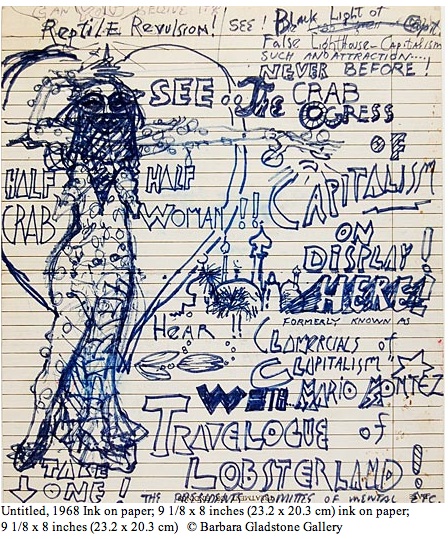
Fifty years later, Smith can be seen as having raised trash to the level of art before Warhol had even conceived of Pop Art. For that matter, Smith is acclaimed as the spawning influence on a host of the most inventive artists to come after him. Besides Warhol, Smith's indelible mark can be seen on the work of Carolee Schneemann, John Waters, Robert Mapplethorpe, Lou Reed, Patti Smith, General Idea, David Lynch, Monty Python, and Laurie Anderson. Artists of succeeding generations who amplify Smith's influence include Cindy Sherman, Nan Goldin, Mike Kelly, Matthew Barney, Madonna, John Cameron Mitchell, Terrence Kohl, Marilyn Minter, and Lady Gaga, to name but the most obvious and famous. Even renowned European filmmakers Federico Fellini and Pier Paolo Pasolini evidence the impact of Smith's import abroad.
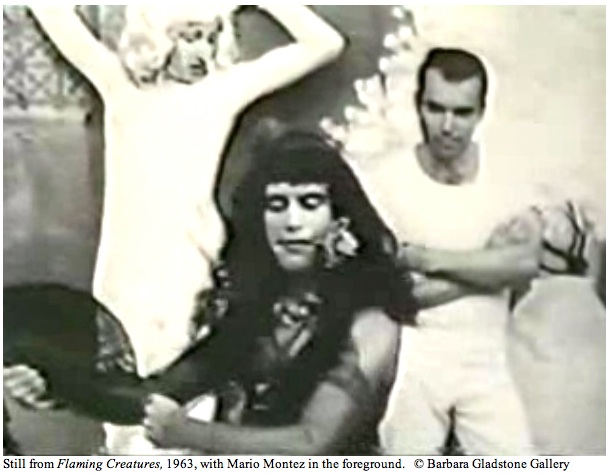
Sadly, Smith's legendary status didn't grow significantly beyond its cult following until after Smith's death in 1989 of AIDS-related pneumonia. But long before, Smith had retreated from film and photography to make performance art, and by the time of his death his early films and photographs seemed virtually non-existent. It became near impossible to rent prints of his films for screenings, though a few pirated prints and poorly minted DVDs circulated until the performance artist and Warhol superstar Penny Arcade joined with film critic and historian J. Hoberman in the late 1990s to restore and reissue Smiths' films and archive his photographs, sketches and collages. The pair soon after collaborated with curator Edward Leffingwell to organize the first major and much acclaimed retrospective of Smith's work at New York's PS1.
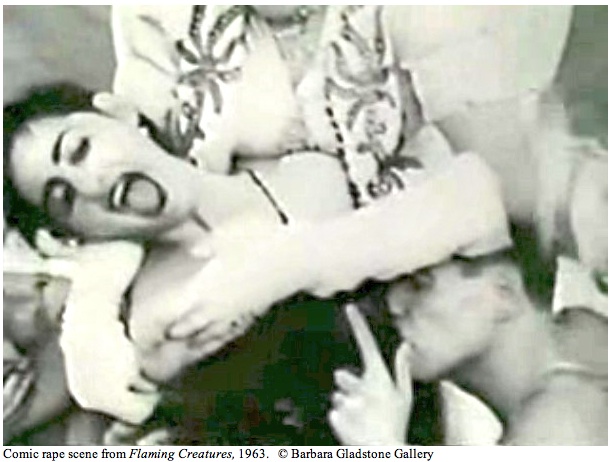
Unfortunately for those craving, or yet to discover, Smith's art, the body of his work became absorbed by a lengthy legal battle that ensued with Smith's sister for the better part of the last decade. Except for the rare, pirated copies of his films circulating just enough to keep interest in Smith and his work the stuff of legend, the world was denied all view of his art. It's why the art world bristled with expectation when in 2008 it was announced that the entire Smith estate was purchased by longtime visionary gallerist Barabra Gladstone in New York. This spring, Gladstone unveiled the first exhibition of Smith's photographs, sketches and collages, along with screenings of his films, curated by Neville Wakefield. In the show's selectivity and restraint, key themes and motifs in Smith's art are heightened and clarified for viewers who previously knew only his films.

Now all we need is diverse and scholarly writing on Smith. Much of what exists is romanticized to the point that Smith has been virtually beatified, so difficult has it become to separate fact from fiction. The aura of hagiography surrounding an artist is never a good gauge of the scholarship devoted to him and his work. Two works that do deliver worthy commentary are em>The Life and Time of Jack Smith, Artist, Performer, Exotic Consultant by Jack Smith, Edward Leffingwell and J. Hoberman, and the documentary film, Jack Smith and the Destruction of Atlantis, by director Mary Jordan. What is called for now is an array of interpretive approaches to Smith's enigmatic work that extends beyond the confines of the circle of Smith's longtime friends and champions.
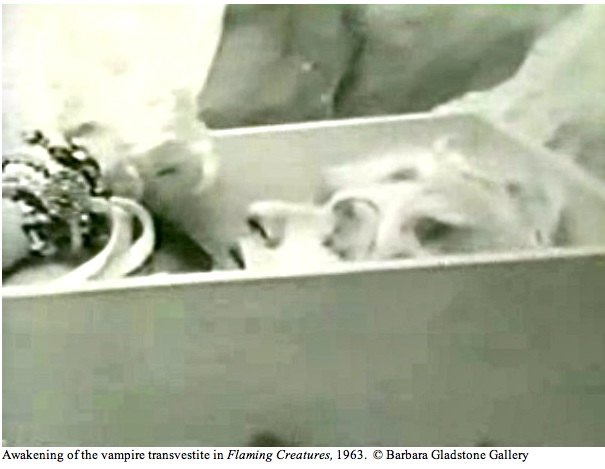
A new generation of Smith viewers deserve a freshly sympathetic-yet-critical eye to argue for or against the relevance of Smith's work to an age in which audiences suspect the poverty of an artist is indication of his irrelevance. Combined with the Gladstone Gallery's efforts to break Smith into the market, a renewed interpretation of Smith's work will insure it remains equal in stature with the other pre-Warhol era queer filmmakers who were Smith's peers--Jean Genet, Kenneth Anger and Yukio Mishima. We can only wonder what Smith's international reputation would be today had he possessed either Anger's or Mishima's instinct for distribution and self-promotion and Genet's good fortune in attracting internationally-acclaimed supporters like Jean Cocteau and Jean-Paul Sartre. By Smith's own words we know he alienated the influential supporters he drew early on. In a 1978 interview in Semiotext(e), Smith ungraciously complained of the defense of Flaming Creatures that Susan Sontag wrote for The Nation in 1964, along with the promotion of the film by Jonas Mekas as high art. "The first audiences were laughing all the way through," Smith noted. "But then that writing started ... there was dead silence in the auditorium."
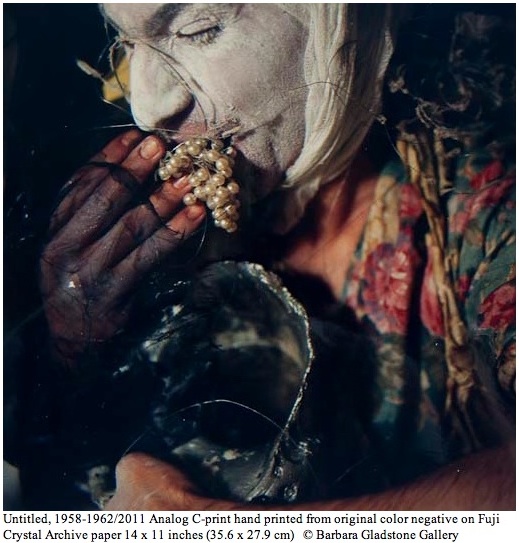
Still, few artists of the intensely intellectual and ideological 1960s have been valorized for sacrificing all for their art to the extent that Smith has. Smith himself must have thought so, for like Genet, Anger and Mishima, and indicative of the queer male zeitgeist of the 1950s, Smith was inclined to equate art making with abject sex. He certainly didn't think himself above entertaining the abject fantasy of the faggot or transvestite playing the bitch to the brute who beats and rapes him in a fit of self-loathing because as boys both rapist and raped were beaten by fathers who they simultaneously adored and feared. It's a theme that, despite its psychological relevance, some gays today regard as conflicting with the prevailing emphasis on pride.
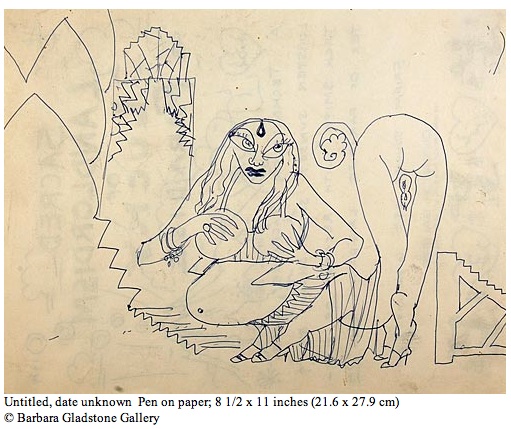
Also problematic is the imagery in Flaming Creatures of women partaking in the (simulated) rape of women. Although the few such scenes were shot with the comic overkill of slapstick and theatrical hamming of its actors, some women insist the sight of rape being reduced to a cartoon is dangerous to women. For them, Smith's insult and injury reside not in the depiction of the rape, but in the swoon that overcomes the victim midway through the crime--her acknowledgement of newfound pleasure in being raped and grateful devotion to her rapist. Smith was no doubt making fun of his own queer fantasy of being raped, which is precisely why underground film audiences in the know have adored such scenes for their obvious camp parody despite that the sight of both female and queer abjection onscreen is found objectionable by some feminist and queer activists.
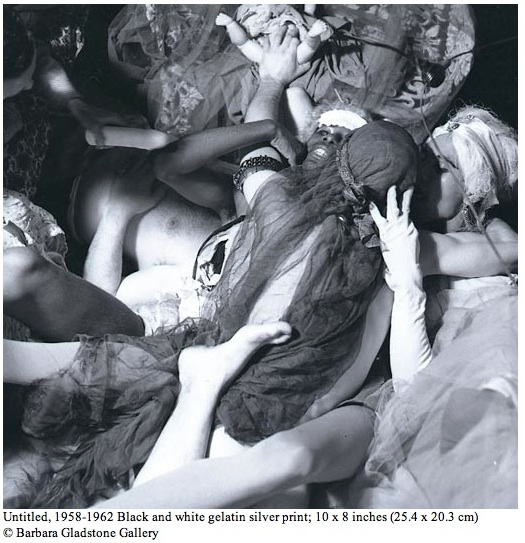
As the art world grows beyond its traditional North American and European boundaries, Smith supporters will also have to stave off discontent over misreadings of the artist's Orientalist-primitivist proclivities. Strictly speaking, Smith isn't even parodying the tribal, nomadic, and traditional peoples of Asia, Africa and Oceana. His film Normal Love may depict a rainforest setting, but it is overflowing with fanciful misfits and mutants (including a mermaid!) in pursuit of hedonistic love. Whether or not they're meant to be broadly analogous to the colonized peoples of the early 1960s (who besides being unknown to most Westerners, under Western colonial rule were treated as second-class citizens in their own countries) is a matter of contention. But if the charge of ethnocentrism has little traction in Smith's work, it's because the cast of Smith's fantasias bear no specific resemblance to any real ethnic or religious group. Smith's photographs may resemble portraits of the world's dispossessed populations living in the shadow of invasive multinational corporatism, but Smith's subjects are outfitted in draperies and makeup that only vaguely recall the customary dress of Asian and African societies, and then only to the untravelled eye. Smith's photographs are entirely simulated, depicting no more than his longing to belong to some perversely blissful tribe of flower children capable of delighting equally in the sensuality of gardens and the barrenness of concrete slums.

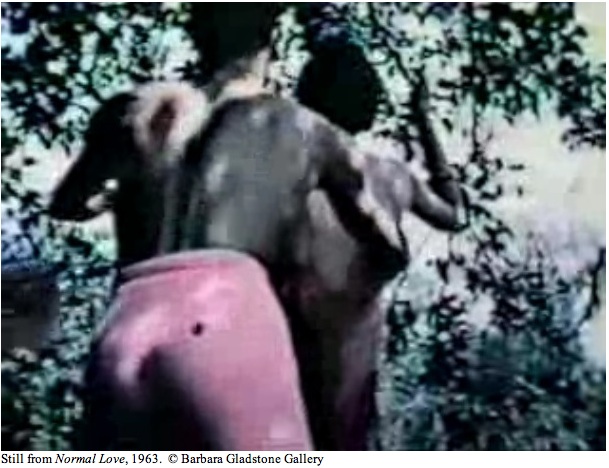
It helps to remember that in the early 1960s, before the Stonewall Nation, feminists, and anti-colonial guerillas rose up to fight for pride and empowerment, abject depictions of women, queers and the colonized were still the default expression buttressed by law and religion. To be arrested and impoverished, in essence to be made abject, and for one's art as Smith had been, was the artist's counterpart to the non-violent protests and arrests of the budding civil-rights, anti-war and anti-colonialist movements of the day. In a context of civil dissent, Smith's parodies of abused women, queers, and homeless urban urchins can be recognized as portraits of humanity at the same time they are portraits of the artist whose empathy brings him sight of the human condition. It was Smith's special talent to be able to transform the iconography of camp into political activism, and he did so simply by depicting people having inordinate pleasure. It's why Smith's hedonistically enrapt souls appear anything but abject in their celluloid, silverprint and c-print paradises. Whatever the circumstances of their lives, they appear joyous beyond compare, and joy is always the mark of true defiance.
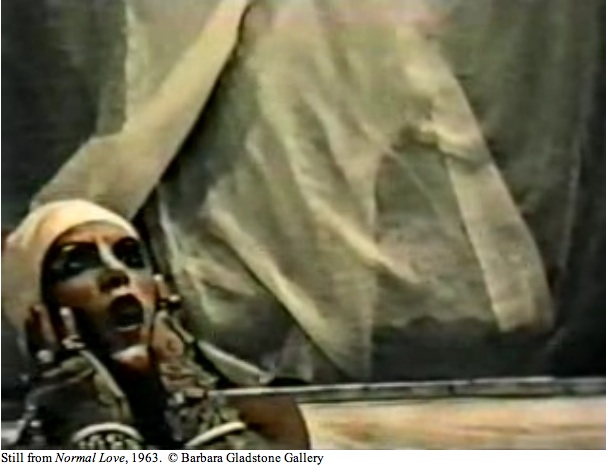
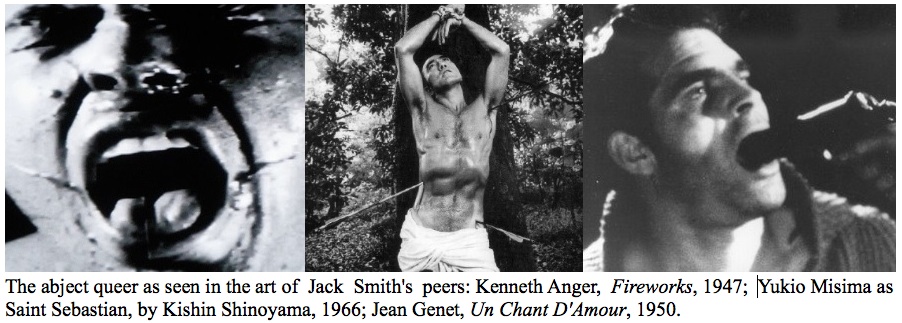
In this respect, Smith's films both share and depart from the purposively abject sensibility of Genet's Un Chant D'Amor and Anger's Fireworks, along with the image of Mishima posed famously as the martyred Saint Sebastian by photographer Kishin Shinoyama. And though Mishima's own cinematic enactments of Japenese ritual seppuku in the films Patriotisim and Hitokiri aren't queer films, they are no less imbued with the aesthetics of a spiritual abjection thought to purge the human spirit of its harmful contaminations. Here the three most eminently queer artists of Smith's lifetime share with Smith a single irrepressible motif--that of representing themselves (if through their actor surrogates) as pathetic victims at the mercy of social forces beyond their control. It matters little whether it's thugs who beat them or authorities demanding their deference and civic obligation. Abjection is imposed on them by a mercilessly absurd world, and they can do nothing but submit. Or can they?

Here is where Smith departs from the abject theme of Genet, Anger, and Mishima. Whatever adversity they face, Smith's congregation of vampires, thieves, harlots, even his exotic jungle and slum dwellers, possess a blithe disregard for and independence from the constraints that can deprive them of their indefatigable joy. It's a simple if relentlessly comic characterization, yet it serves as Smith's foil to the abjection that consumes his contemporaries while unfurling the proof that he is at heart a combatant against the dehumanization of the so-called undesirable element in society. It's why Smith finds it necessary to keep his characters ecstatically laughing, dancing, and of course making love throughout their cinematic travails.
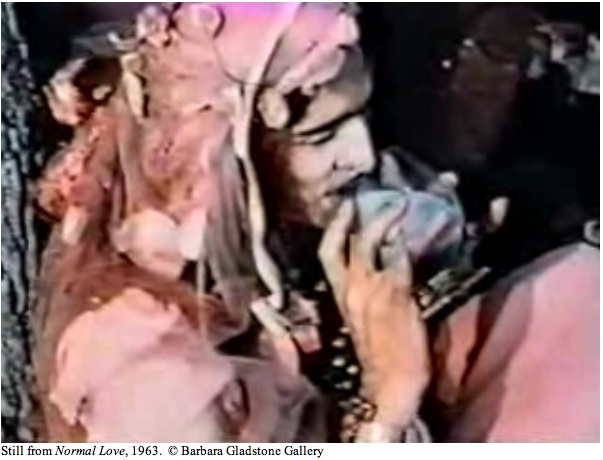
The inhabitants of Smith's art are beings wondrously supported by the mystic's truism that freedom is found in letting go of worldly desire--a creed that must have inspired if not personally empowered the financially impoverished Smith, enabling him to make such orgiastic masterpieces as Flaming Creatures and Normal Love. How else could he justify reveling with such abandon in the eternal present of simple delights issuing from his free-flowing imagination. The mystic, the bohemian, the beat, the hippy: all the countercultural identities assumed by Smith at the height of his creativity hold to the common principle that work and invention (the basis of art) are the cure for the impoverishment of the spirit, and as such compose the most aesthetically and politically subversive acts of protest against social disenfranchisement.
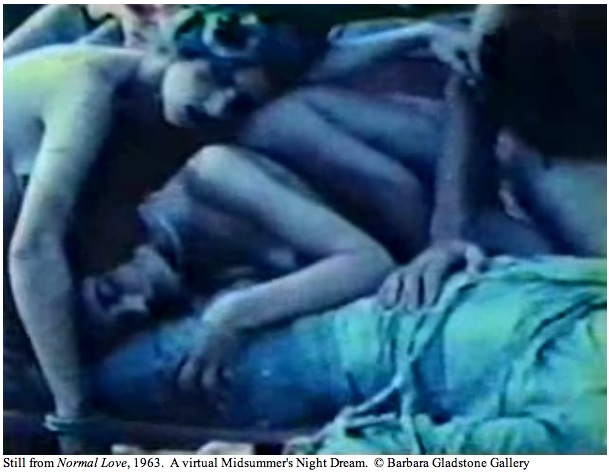
Read other posts by G. Roger Denson on Huffington Post in the archive.
Follow G. Roger Denson on Facebook and Twitter
?
?
?
Follow G. Roger Denson on Twitter: www.twitter.com/GRogerDenson
Source: http://www.huffingtonpost.com/g-roger-denson/jack-smith-and-the-aesthe_b_877220.html
mac rumors ios 5 gizmodo mls listings weiner mobileme skyrim
No comments:
Post a Comment
Note: Only a member of this blog may post a comment.